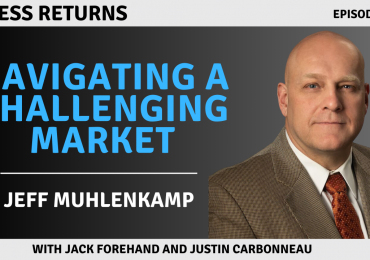By Jack Forehand, CFA (@practicalquant)
There might not be a term that is the subject of more debate in the investment industry than risk. If you asked ten different investors to define the term, you would probably get ten different answers. Some would likely respond with simple to understand concepts like the potential of losing your money, while others would respond with advanced statistical measures that your average investor would have difficulty understanding. But either way, there certainly is significant disagreement with respect to both what risk is, and how it should be measured.

If you are expecting me to give you the clear definition of risk we are all searching for in this article, you are likely to be disappointed. Believe me, I would love to be the person who finally offers the perfect definition of risk that we all can agree on. But the problem isn’t that the perfect definition of risk hasn’t been found. The problem is that it doesn’t exist.
The reason that risk is so difficult to define in investing is the fact that its definition can’t be disentangled from the person who is taking that risk. What one person considers risk will not be risk to someone else. For that reason, understanding risk is an exercise each of us need to go through individually. It is a process that involves taking an honest look at ourselves, and our investing goals, and the pain we are willing to tolerate to achieve them.
So instead of trying to write the article that finally gives the clear, concise definition of risk we are all looking for, I figured it might be better if I looked at the different ways that we can define risk, and how each of them can derail us as investors.
Here are some risks investors should pay attention to.
[1] Permanent Loss of Capital
The first type of risk is pretty obvious. If I lose all my money or I lose enough of it that I can’t recover in time to reach my investing goals, then I certainly will have experienced risk. At an extreme, this could be something like putting all my money into options that I don’t understand or investing too much money in a single stock, but this risk can even impact diversified investors who allocate too much to risky assets at the wrong time. For example, if I was near retirement in 2008 and I moved all my assets into stocks, that might be an error I wouldn’t be able to recover from.
[2] Volatility
Warren Buffett is famous for saying that volatility isn’t risk. And when you analyze risk from the perspective of a billionaire who has proven that he will stick to his investment strategy through any conceivable outcome, he is 100% right. But most of us aren’t Warren Buffett. Most of us will panic when the market goes down. Most of us will abandon an investment strategy when it underperforms for a decade. If you are an investor who can stay the course through anything like Buffett, then volatility isn’t risk. For your average investor, though, it is one of the most significant risks they face.
[3] Deviating From the Market
We just taped an interview for our podcast with Jack Vogel of Alpha Arhitect that will come out later this week in which we discussed the concept of trend following. Trend following is just a system that will move a portfolio out of the market when technical conditions deteriorate to try to limit significant losses. If you look at its historical track record, it has done a pretty good job of that. In addition to limiting drawdowns, trend following has also produced fairly comparable returns to buy and hold over the long-term. So at a high level, you have a strategy with similar returns to the market, less volatility, and smaller drawdowns.
But despite that, Jack described trend following as one of the most difficult strategies for an investor to stick with. How can that be possible? The reason is that the price that trend following pays for limiting drawdowns is it will have periods where it gets out of the market when it shouldn’t. As an investor in a trend following strategy, you will have significant periods of time that you are sitting in cash while the market goes up. Most investors just can’t do that and will abandon the trend following strategy at the wrong time. As much as it might not make sense, for many investors, the risk of sitting on the sidelines and missing out on gains can be even greater than the risk of loss.
[4] Investment Strategy Risk
Investors like myself that choose to pursue a strategy that differs from the market also face an additional risk. I use quantitative strategies that utilize factors, but the same risk applies if you invest in a mutual fund that uses a discretionary approach, or if you pick stocks on your own. If you use a strategy that deviates from the market, you run the risk that deviation will hurt your returns rather than help them. Even for those of us who use factors like value and momentum that have worked over very long periods of time, the risk that they will stop working and we won’t figure that out until it is too late exists and is something we have to live with.
[5] The Risk of Bad Luck
One of the toughest risks we all face as investors is the risk that we will do everything right and we still won’t achieve our goals. As much as we don’t want to admit it, luck plays a big role in the investing outcomes we achieve, even over long periods of time. For example, you might spend your entire working career building a portfolio that can meet your retirement needs and then watch the market fall 50% in your first year of retirement. That risk, which is often referred to as sequence risk, can derail even well thought out investment plans.
The Elusive Definition of Risk
In the end, risk is a chameleon. It takes different forms with different investors and at different times. In my opinion, the key to understanding risk in investing is understanding yourself, what you are trying to achieve, and what could potentially derail that plan. Although the list above is far from comprehensive, I think it can be a good starting point when analyzing the risks with the most potential to derail us as investors. Although there may not be an exact definition of risk, the process of understanding it as it applies to each of our own situations is crucial to investing success.

Jack Forehand is Co-Founder and President at Validea Capital. He is also a partner at Validea.com and co-authored “The Guru Investor: How to Beat the Market Using History’s Best Investment Strategies”. Jack holds the Chartered Financial Analyst designation from the CFA Institute. Follow him on Twitter at @practicalquant.









